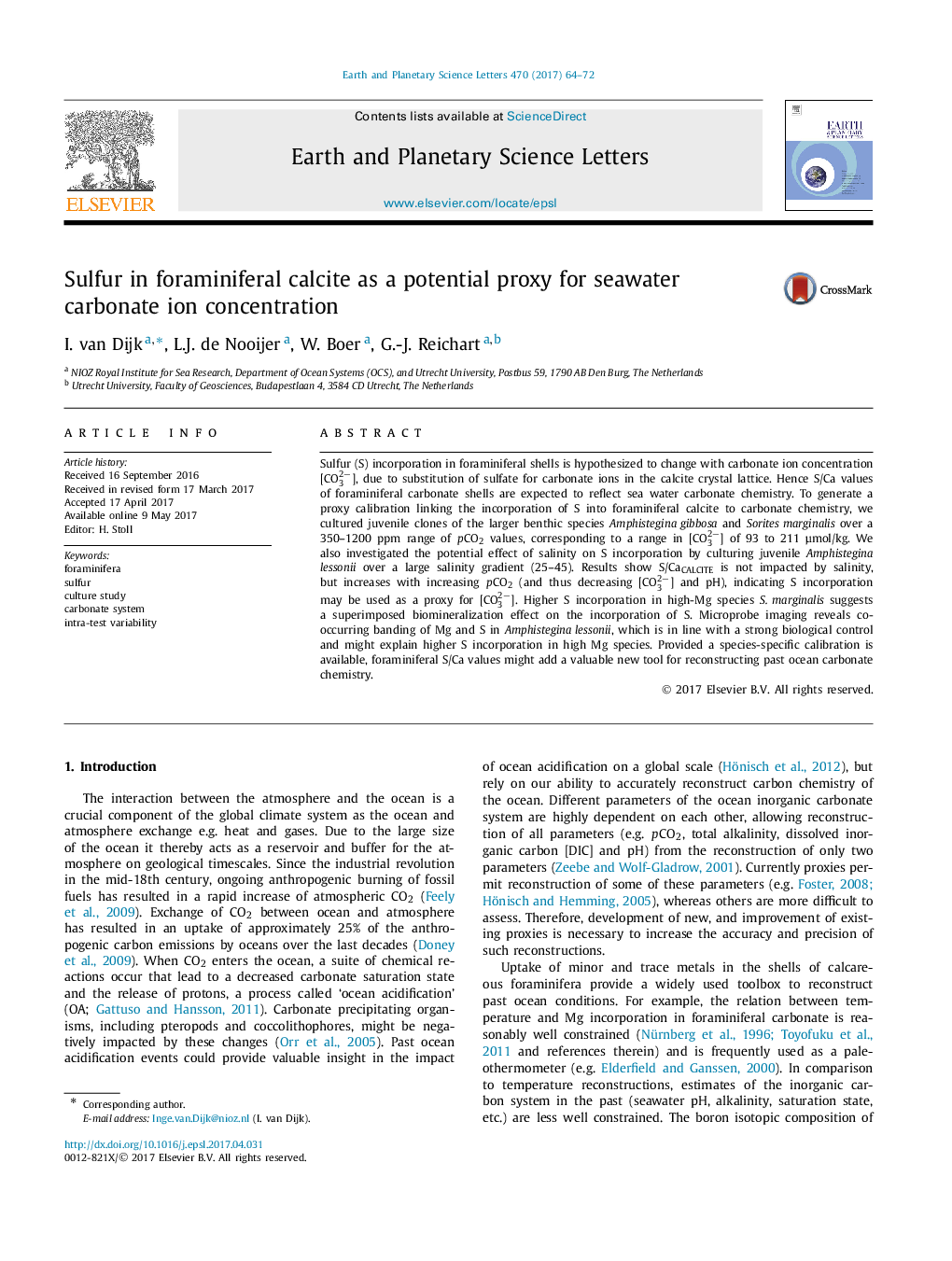| Article ID | Journal | Published Year | Pages | File Type |
|---|---|---|---|---|
| 5779621 | Earth and Planetary Science Letters | 2017 | 9 Pages |
Abstract
Sulfur (S) incorporation in foraminiferal shells is hypothesized to change with carbonate ion concentration [CO32â], due to substitution of sulfate for carbonate ions in the calcite crystal lattice. Hence S/Ca values of foraminiferal carbonate shells are expected to reflect sea water carbonate chemistry. To generate a proxy calibration linking the incorporation of S into foraminiferal calcite to carbonate chemistry, we cultured juvenile clones of the larger benthic species Amphistegina gibbosa and Sorites marginalis over a 350-1200 ppm range of pCO2 values, corresponding to a range in [CO32â] of 93 to 211 μmol/kg. We also investigated the potential effect of salinity on S incorporation by culturing juvenile Amphistegina lessonii over a large salinity gradient (25-45). Results show S/CaCALCITE is not impacted by salinity, but increases with increasing pCO2 (and thus decreasing [CO32â] and pH), indicating S incorporation may be used as a proxy for [CO32â]. Higher S incorporation in high-Mg species S. marginalis suggests a superimposed biomineralization effect on the incorporation of S. Microprobe imaging reveals co-occurring banding of Mg and S in Amphistegina lessonii, which is in line with a strong biological control and might explain higher S incorporation in high Mg species. Provided a species-specific calibration is available, foraminiferal S/Ca values might add a valuable new tool for reconstructing past ocean carbonate chemistry.
Keywords
Related Topics
Physical Sciences and Engineering
Earth and Planetary Sciences
Earth and Planetary Sciences (General)
Authors
I. van Dijk, L.J. de Nooijer, W. Boer, G.-J. Reichart,
